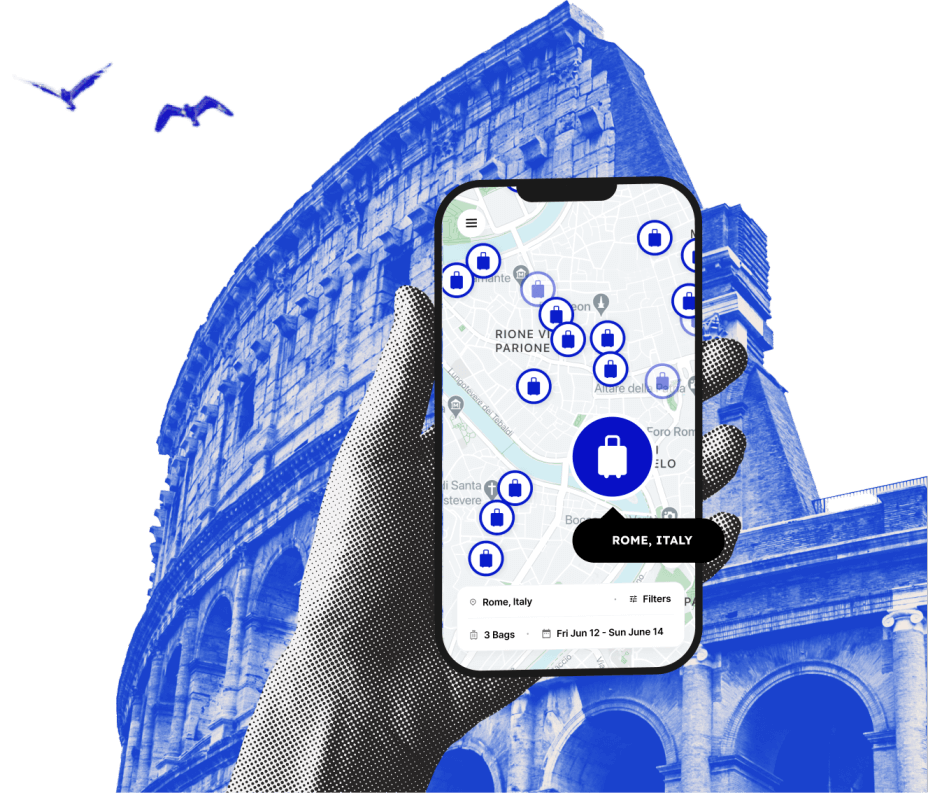The 9 Best Museums In Florence
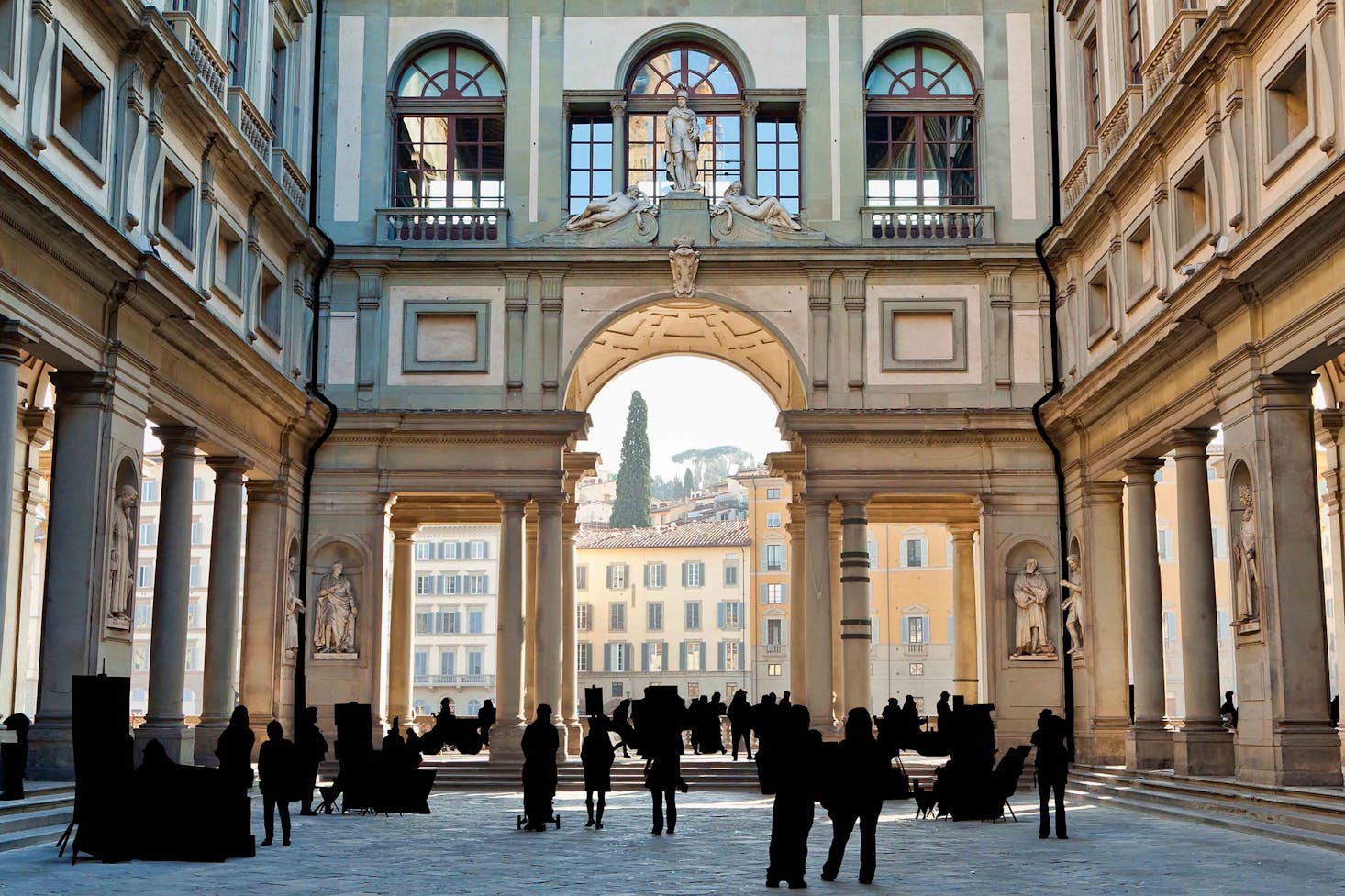
Museum hopping in Florence is probably one of the most interesting and exciting things to do even if you are not a history buff or museum nerd! Florentine history is seen literally around every corner, in the piazzas, and in the churches and cathedrals. The entire city may as well be its own open-air museum filled with breathtaking architecture and artifacts from the Renaissance and Baroque periods.
To see more of the treasures of Florence, you will want to get up-close-and-personal with many of the museums dotted throughout this historic city. From Michelangelo to Brunelleschi, from the Rennaisance era to present day, there is plenty to see and explore in the best museums in Florence. Meander through royal apartments, browse incredible art galleries, and see sights like the wonderful Boboli Gardens where the Medici family once strolled.
Before you begin your museum hopping journey through Florence, drop any extra bags at a luggage storage locker. Most Florentine museums do not allow large bags inside so this keeps you from having to find somewhere nearby to stow your things while inside each museum.
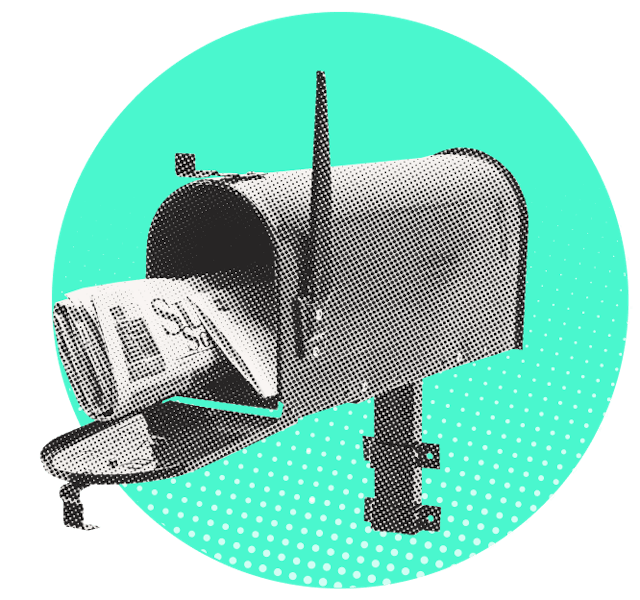
Love discounts and traveling?
Sign up for our newsletter and get 10% off your next booking.

Uffizi Gallery
Address: Piazzale degli Uffizi 6, Florence, Italy
The Uffizi Gallery is one of the best museums in Florence and is a great way to spend a lazy afternoon. It can be an ordeal to actually get into the museum, you must have a ticket to enter, go through a metal detector, and take two flights of Renaissance-style stairs before you reach the entrance to the Uffizi Gallery.
When you walk into the museum, you will be mesmerized by the frescoed ceilings and open, airy space. The Uffizi Gallery is arranged as a labyrinth with rooms that interconnect in a U-shaped building and hold fantastic works of art. The museum has organized the collections in chronological order. The Uffizi was built by Giorgio Vasari for Cosimo de’Medici and was originally used to host the seats of the Florentine Guilds and as office space.
Guests can explore the Uffizi and then plan on strolling along the Vasari Corridor which links the Uffizi and the Palazzo Vecchio to the Pitti Palace. The Vasari Corridor is just over a half mile long. There are several interesting self-portraits and paintings from the 17th and 18th centuries. The circular windows of the corridor give you wonderful views of Florence.
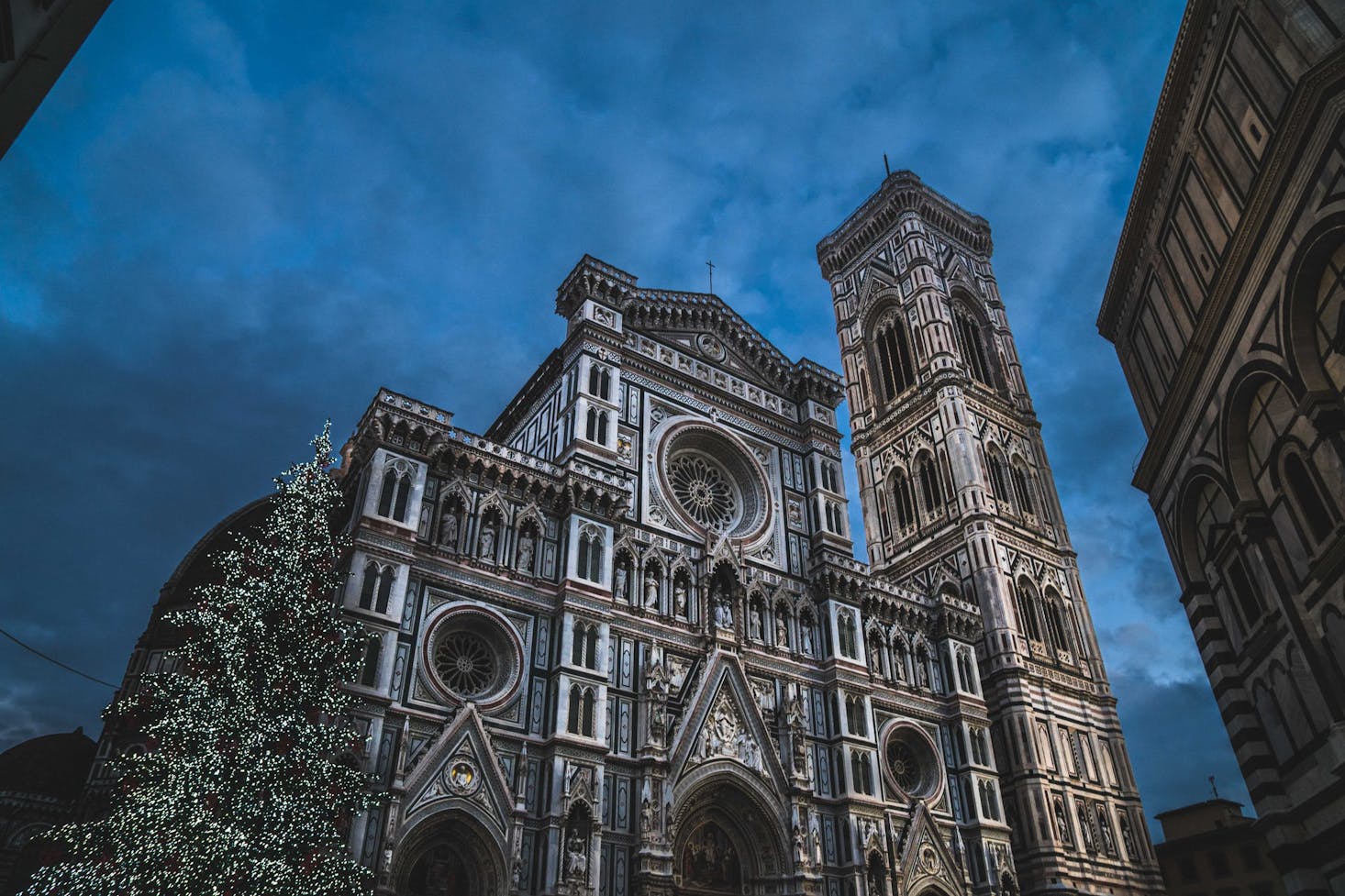
Da Vinci Museum (Leonardo da Vinci Interactive Museum)
Address: Florence Via dei Servi, 66/r., Florence, Italy
Every member of the family will enjoy this museum. It may be small but contains many treasures! The museum is made up of five sections. The mechanisms, earth, water, air, and fire sections show the sheer genius of this engineer, scientist, and artist . Located just a two minutes walk from Duomo Square, visitors will be enthralled by the mechanics and physics represented here.
This museum is unique in that one can try the interactive machines and gain a fun understanding of just how they work. Even some of da Vinci's cartography is on display.
Galleria dell’Accademia (The Accademia Gallery)
Address: Via Ricasoli 58/60, Firenze, Italy
Home of important collections, this museum is best known for the giant marble sculptures including Michelangelo's famous David, which was once found in the Piazza della Signoria. Plan on spending a few hours exploring all the gallery halls where you can learn more about music, painting techniques, art symbols, and even botany. The lesser-known halls will be much more relaxing as you will not have to deal with the large crowds.
The Hall of the Colossus is one of the most popular halls. It home to the plaster model of Giambologna’s famous marble sculpture Rape of the Sabine Women. While Giambologna did not name this famous sculpture, it is was created as an exercise of using his skill to carve three figures from one large block of solid marble. It became the first example of this type of skill.
While still in the Hall of the Colossus, you will notice a number of panel paintings that hang on all four walls. You will see intriguing works of art by Pontormo, Perugino, Bronzino, Filippino Lippi, and Domenico Ghirlandaio. Right next to the entrance to this hall is the Cassone Adiman, a narrow rectangular chest and the Baptistery monument. There is even brocade clothing of the royal family from the 1450s.
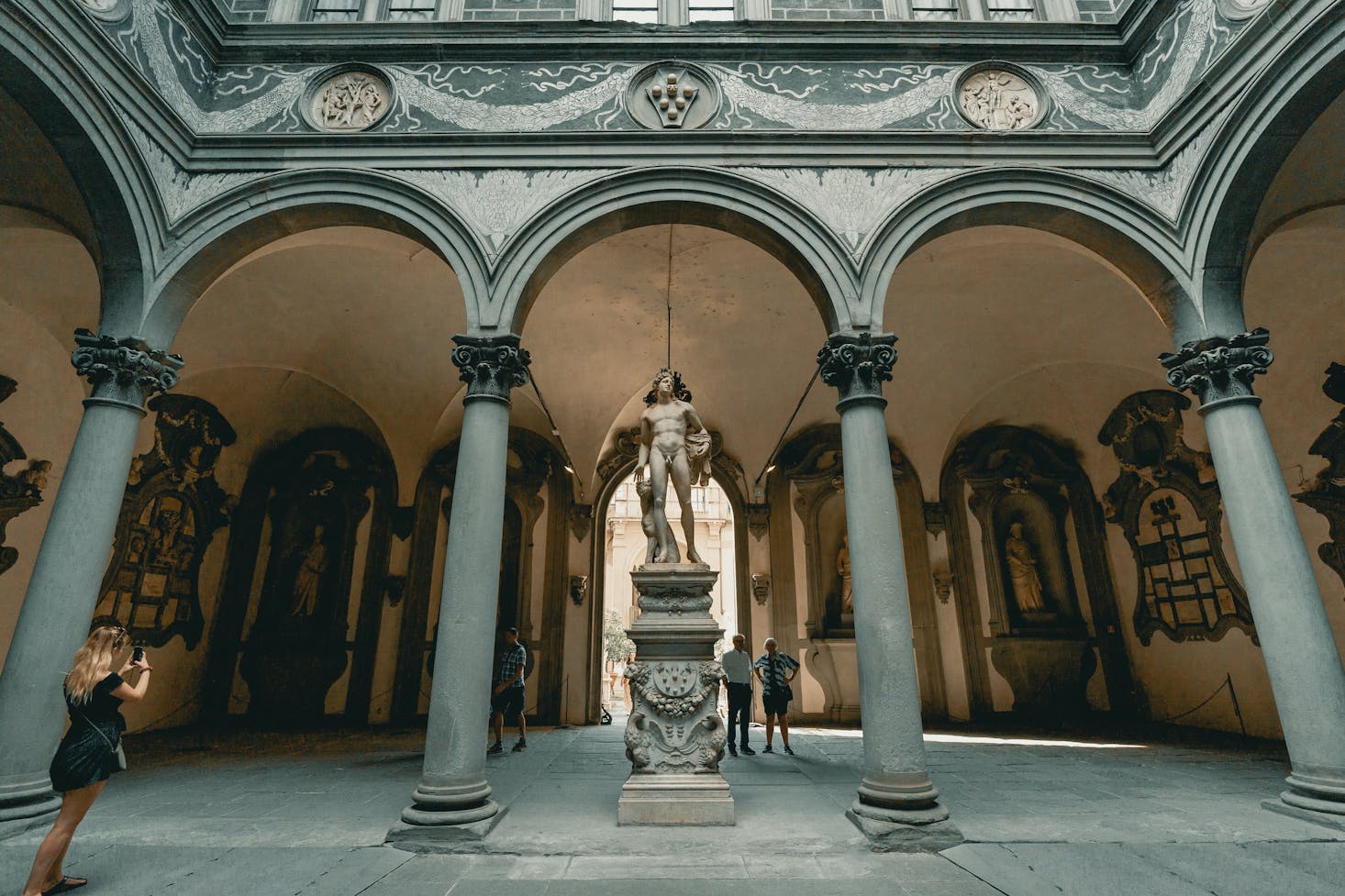
Santa Maria Novella and Museum
Address: Piazza Santa Maria Novella 18, Florence, Italy
This Gothic church is considered one of the most important in Florence and the architecture is one of the most important in all of Tuscany. The exterior is a collaboration by Leon Battista Alberti and Fra Iacopo Talenti da Nipozzano. The interior is just as magnificent with amazing works of art such as Ghirlandaio’s Tornabuoni Chapel, Masaccio’s Trinita, and Giott’s Crucifix.
The original convent was built beginning in 1279 and completed in 1357. The convent sat near a 7th century church located just outside the medieval walls of Florence. The lower level was created following architect Iacopo Talenti da Nipozzano’s plans and the upper level was created over a hundred years later in 1470. Architect Leon Battista Alberti executed the upper level.
You can stroll around the Santa Maria Novella, taking in the marble façade and magnificent architecture. Then head inside and enjoy the amazing décor, including priceless paintings and artifacts. While inside, plan on seeing more amazing artifacts that will leave you with a new appreciation of the Santa Maria Novella.
Brancacci Chapel in Santa Maria del Carmine
Address: Piazza del Carmine, Firenze, Italy
While the Santa Maria del Carmine Church has a pretty plain façade, the Cappella Brancacci is a beautiful and ornate chapel that you absolutely want to visit. Most of the churches in Florence were destroyed in the 1771 fire but there were two chapels that survived virtually unscathed, the Brancacci chapel and the Corsini chapel.
You cannot access the Cappella Brancacci from the Santa Maria del Carmine, instead you have to pass through the cloisters. Once inside, you will immediately notice the frescoes that were commissioned by Felice Brancacci in 1424. Brancacci was a statesman and wealthy merchant and wanted the frescoes to depict the life of St. Peter.
Masolino da Panicale designed the frescoes and began painting them. In 1428, his pupil, Masaccio, took over painting the frescoes but he died later that same year at 27 years old. The frescoes were left uncompleted for several years. The remaining parts of the frescoes were finally finished by Filippino Lippi during the 1480s.

Casa di Dante Museum
Address: Via Santa Margherita 1, Florence, Italy
This museum is fully dedicated to Dante Algheri’s memory and a home for the Dante monument. The medieval times is preserved at the Casa di Dante Museum where you will be able to view all the literary and intellectual masterpieces that Dante created during the 1300s. His work from his private collection sheds much light on the political, economic, and physical attributes of Florence during the medieval times.
The museum is housed in the refurbished building thought to be where Dante was born. With three floors to explore, you can learn more about the three most important times in his life. In 1911 the Italian government finalized the purchase of the building and land and began the process of creating the Casa di Dante Museum.
As you make your way through Florence, you will probably notice several markers and informational plaques that commemorate the famous poet’s passage through the city. Most of these plaques and markers were placed in 1907 so visitors could walk in his footsteps and visit the very real places that are mentioned in his works.
National Archaeological Museum in Florence
Address: Palazzo Pitti 1, Florence, Italy
No list of museums in Florence is complete without including the National Archaeological Museum! See Etruscan sarcophagi, Egyptian mummies, Roman sculptures, and so much more. This is one of the biggest and oldest museums in Italy and should definitely be on your must-visit list when you are museum hopping in Florence.
The original location of the museum was on Via Faenza and was inaugurated on March 12, 1871, by King Vittorio Emanuele II. The collection quickly outgrew its original location and had to eventually move to the Palazzo Pitti. The original Etruscan Museum was merged with the National Archaeological Museum when it moved spaces and is home to one of the biggest collections of Etruscan artifacts in Italy.
While here, be sure to check out the Egyptian Museum which is the second largest Egyptian collection in Italy; the biggest collection is in Turin. There are several Roman and Greek antiquities that have been adopted from the Lorena and Medici family collections. Plan on spending several hours here to be able to see as much as possible. Afterward, why not head for a relaxing brunch? This list, written by Bounce, has several Florence brunch spots to consider.
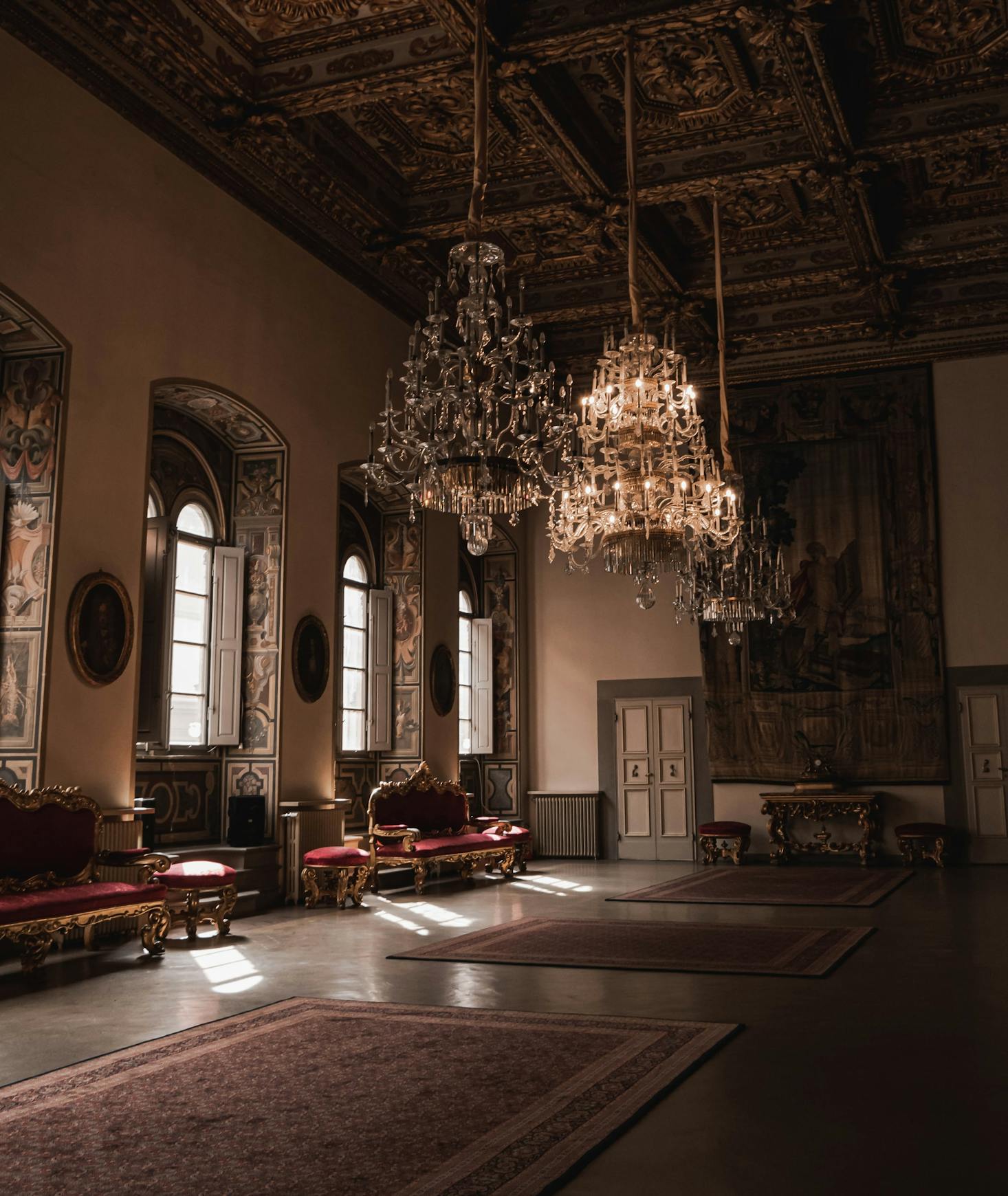
Casa Buonarroti
Address: Via Ghibellina 70, Firenze, Italy
While many believe that Casa Buonarroti is the ancestral home of Michelangelo or that he was at least born here or lived here at some point, there are just as many who believe the building was finished several years after Michelangelo died and therefore, he never lived here. But, the Casa Buonarroti is still a fascinating place to explore.
So, Michelangelo may not have lived in the building housing the museum, but there are records that do suggest that he lived at that address with his nephew Leonardo during the time he was working at the Medici family chapel. The museum consists of three floors and joins several properties including one that Michelangelo did for certain live in before moving closer to San Lorenzo.
The museum showcases Michelangelo’s early stages of his art and was started by surviving members of his family. The Buonarroti family is well documented and sheds much light on the family’s greatest achievements. Most of the artifacts have been passed down through the generations of his family and have been compiled into an interesting museum.
The property where the museum stands was inherited by Filippo Buonarroti and then passed to Michelangelo the Younger, the son of Leonardo Buonarotti. Michelangelo the Younger divided the first floor of the museum into the four fascinating halls that you will see today. Many of the pieces on display here are from his private collections.
Palazzo Strozzi
Address: Florence City Center
The wealthy Florentine families seem to have a bad case of “keeping up with the Joneses”. They wanted their homes to show off their wealth and be bigger, grander, and much more domineering than their neighbors. This type of attitude led to the architectural novelties you can see as you make your way through the more affluent areas of Florence.
Palazzo Strozzi is one of those architectural novelties. The Strozzi family was one of the richest Florentine families and therefore, their home must be one of the biggest, most ostentatious mansions in the entire city. Thus, Palazzo Strozzi was built after Filippo Strozzi was able to end his exile in 1466. His strong political opponent, the Medici family, forced the Strozzi family into exile in 1434.
After his resurrection on the social and political Florentine scene, Filippo Strozzi worked non-stop to create one of the most fantastic mansions in the city and crush his political opponent. The Palazzo Strozzi was deliberately built to be much bigger than Palazzo Medici so everyone would know the Strozzi family was more powerful and wealthy than the Medici family.
Today, you can stroll through this enormous building and imagine what life would have been like in a home of this size. The house has been fully restored and you will be able to see personal effects of the family, art collections, clothing, and personal correspondence.

What are the best free museums in Florence?
Although there is plenty to do in Florence for free, finding free museums can be a bit challenging, especially if you are not accustomed to how the national and state museums operate. The national museums do offer several days throughout the year where admission is free of charge for national museums. Therefore, the National Archaeological Museum does offer free admission days. Check their website for more information.
Which are the best museums in Downtown Florence?
There are a number of wonderful museums in the city center of Florence and you can easily walk to each one from the city center. With so many in one small area, plan to spend a day museum hopping in downtown Florence. We recommend Pitti Palace, Uffizi Gallery, Medici Chapel, and Museo Galileo.
Are there any cheap museums in Florence?
Cheap is a relative term, so what you may consider cheap another may feel is pricey. But when searching for affordable museums in Florence, you will definitely want to check out some of the lesser-known museums as these should have lower priced admission costs. Casa Buonarroti, Museo San Marco, and Museo Stibbert should be on the list.
Florence Museums
Whether you are excited to learn more about Frederick Stibbert, the Ferragamo family, or Leonardo da Vinci, there are plenty of opportunities to learn about the greats when you visit the important museums in Florence as well as other museums that are lesser known. Add the Bardini Museum and Boboli Gardens to your itinerary. Plan to learn about the middle ages and the Middle East, visit Florence's cathedral, and spend time in the Piazza San Marco. All will be great fun!

Love discounts and traveling?
Sign up for our newsletter and get 10% off your next booking.
